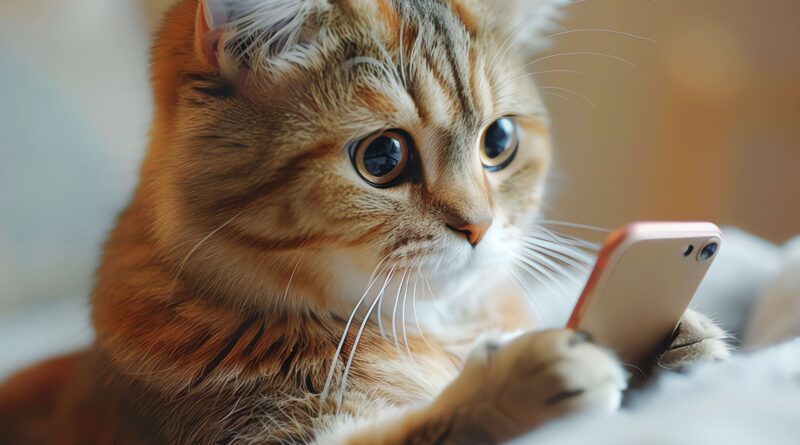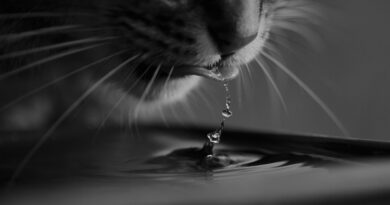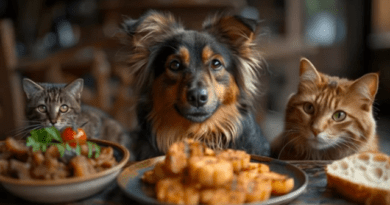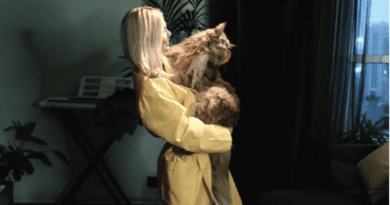The Communication of Cats
Cats communicate in fascinating ways, using a combination of vocalizations, body language, and scent marking. Understanding these signals helps cat owners decode what their pets are trying to express. Whether a cat wants attention, feels threatened, or simply feels content, it always provides clear signs to communicate its needs and emotions. Let’s dive into the key methods cats use to interact with humans and other animals.
- Meowing: Talking to Humans
Cats meow primarily to communicate with humans, not with other cats. Kittens may meow at their mothers, but adult cats reserve this behavior for human interaction. A cat uses different tones and pitches in its meows to convey various messages.
- Short, Repeated Meows: Cats use this sound when they want attention, usually food or playtime.
- Loud, Prolonged Meows: A loud meow often signals frustration, discomfort, or even pain.
- Chirping or Trilling: Cats often trill when they feel excited or happy, such as when they greet their owners.
Each cat may develop its own unique “language” with its human, refining the use of meows to get what it wants.
- Purring: More Than Just Contentment
Most people associate purring with a happy cat, but purring serves multiple purposes. Cats purr when they feel content, but they also do it when feeling anxious or in pain.
- Relaxation and Bonding: Cats often purr when they sit with their humans, expressing relaxation and affection.
- Self-Soothing: A stressed or frightened cat may purr to calm itself, much like a person would hum to self-soothe.
- Healing Properties: Studies show that the frequency of purring (between 25-150 Hz) may promote healing and pain relief, especially after an injury.
Pay attention to the context when a cat purrs. It might need comfort, especially during stressful moments.
- Hissing and Growling: The Language of Defense
When a cat hisses or growls, it clearly feels threatened or defensive. These vocalizations serve as warnings to back off before the cat resorts to physical aggression.
- Hissing: The hiss involves a strong, sharp exhalation, often accompanied by an arched back or flattened ears. Cats use this sound to indicate fear or frustration.
- Growling: Cats growl when they feel cornered or extremely annoyed. This low, rumbling sound signals the last warning before an attack.
Respect a hissing or growling cat’s boundaries, as it has reached its limit in that moment.
- Body Language: Telling the Full Story
A cat’s body language often provides more insight than its vocalizations. Pay close attention to its tail, ears, and posture for clues about its mood.
- Tail Signals: A high tail often indicates confidence and contentment, while a low, tucked tail signals fear. Rapid tail flicking usually means agitation or overstimulation.
- Ears: Forward-facing ears show interest and curiosity, while flattened ears signal fear or aggression.
- Posture: A relaxed cat might lie on its side or belly, signaling comfort and trust. In contrast, an arched back and puffed-up fur clearly indicate fear or defensiveness.
These visual cues often tell a story before the cat vocalizes its feelings.
- Scent Marking: The Invisible Communication
Cats rely heavily on scent to communicate with each other and mark their territory. They have scent glands located in their cheeks, paws, and even their forehead. When they rub against objects—or people—they leave their scent behind, claiming ownership and marking safe spaces.
- Cheek Rubbing: When a cat rubs its cheeks against furniture or a human, it deposits pheromones from glands located in its face, signaling that the object or person belongs to them.
- Scratching: Cats scratch surfaces not only to sharpen their claws but also to leave behind scent markers from glands in their paws. This behavior also leaves visible marks, reinforcing territorial boundaries.
- Spraying: In some cases, cats use urine to mark territory. This behavior, especially common among unneutered males, helps define territory, especially in multi-cat environments.
Understanding the importance of scent to a cat allows owners to recognize when their pet feels the need to establish boundaries or claim ownership.
- Slow Blinking: The Feline Love Language
One of the more subtle ways cats express affection is through slow blinking. Cats will lock eyes with their human or another animal and slowly blink their eyes. This gesture signals trust and comfort.
When a cat offers a slow blink, it’s essentially giving a “cat kiss,” expressing that it feels safe and secure in its environment. Owners can return the gesture by slowly blinking back, reinforcing the bond between human and cat.
- Kneading: A Comforting Gesture
Cats often knead with their paws, pressing them against soft surfaces like blankets or their owners. This behavior originates from kittenhood, when kittens knead their mother’s belly to stimulate milk flow.
As adults, cats knead when they feel comfortable, secure, and happy. Some cats may purr while kneading, further signaling contentment. Though it can sometimes feel uncomfortable for the person on the receiving end, kneading is always a positive gesture from a cat.
Cats communicate through a rich blend of vocalizations, body language, and scent-based signals. By learning to understand these behaviors, cat owners can respond more effectively to their pets’ needs and desires. Whether your cat is purring, hissing, or slowly blinking, each action carries meaning and helps build a stronger bond between you and your feline friend.




